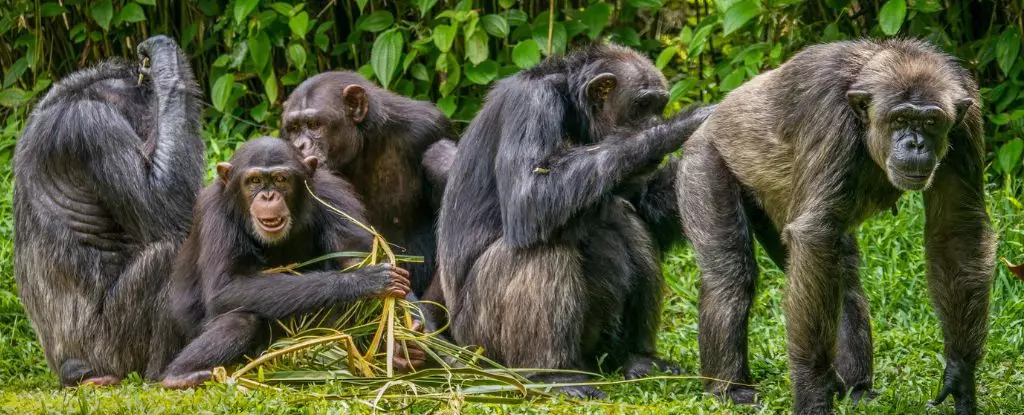Social behaviors within primate species have long fascinated researchers, showcasing intricate networks of communication, hierarchy, and cohesion. One such behavior that has been largely overlooked is urination, a fundamental biological function. Recent research involving captive chimpanzees has unveiled intriguing insights into how this simple act can reflect social dynamics and even influence group cohesion.
A study conducted at the Kumamoto Sanctuary in Japan with 20 chimpanzees highlighted that when one chimp urinates, others are likely to follow suit, particularly in the presence of a dominant individual. This phenomenon, described as contagious urination, provides a new perspective on non-verbal communication among primates. Much like an infectious smile or a communal yawn, urination may have evolved as a social signal reinforcing bonds within the group.
To better understand this behavior, researchers immersed themselves in observing the chimps for an extensive 604 hours. They meticulously recorded instances of synchronized urination—defined as urination occurring within a 60-second window among individuals in close proximity. This close-range observation led the team to discover a distinct pattern: the likelihood of following another’s urination increased dramatically when the chimps were within three meters of each other.
Contrary to initial assumptions that friendship bonds through grooming might lead to synchronized urination, the study indicated that social rank played a more significant role. Interestingly, lower-ranking individuals were more prone to mimic the urination of higher-ranking counterparts. This insight opens new avenues for understanding how social structures impact even the most basic of biological functions.
The findings raise essential questions about the evolutionary implications of this behavior. Ena Onishi, the lead primatologist of the study, suggests that this behavior could have deep evolutionary roots. The act of urinating in concert might not only be about hygiene or biological need; it could also represent a strategy for social bonding and community cohesion.
The research indicates that synchronization in such trivial yet necessary activities might strengthen alliances within the group, much like grooming does. By responding to a leader’s actions, lesser-ranking individuals may foster a sense of belonging and acknowledgment of the existing social structure. This, in turn, may foster group cohesion and harmony.
Human Parallels and Cultural Context
The idea of synchronized urination, while seemingly peculiar, resonates with human social behaviors. It’s not uncommon for people to visit restrooms in groups, driven by social comfort rather than biological necessity. Cultural practices, such as the Japanese concept of ‘Tsureshon’—urinating with others—further emphasize the social dimensions attached to this fundamental behavior. With phrases like “Whoever doesn’t pee in company is either a thief or a spy” from Italian culture, it is clear that humans too assign social significance to this often-overlooked act.
Thus, contemplating the connection between primate and human behavior offers critical reflections on social constructs and biological instincts. By acknowledging these mirrored behaviors, we enhance our understanding of community interaction and bonding across species.
Despite these fascinating revelations, the study concludes with a caveat: many questions remain unanswered. Future research may dive deeper into how factors such as environmental conditions, stress levels, and even social situations influence both chimps’ and humans’ urination behaviors.
The findings make it evident that the act of urination transcends mere biological necessity; it participates in the complex web of social communication among primates. By continuing to explore the significance of such behaviors, researchers can enrich the understanding of animal behavior and perhaps glean insights into the roots of our social customs. The interplay between biology and social dynamics is profound and deserving of further exploration as scientists continue to uncover the intricacies of primate life.

Leave a Reply